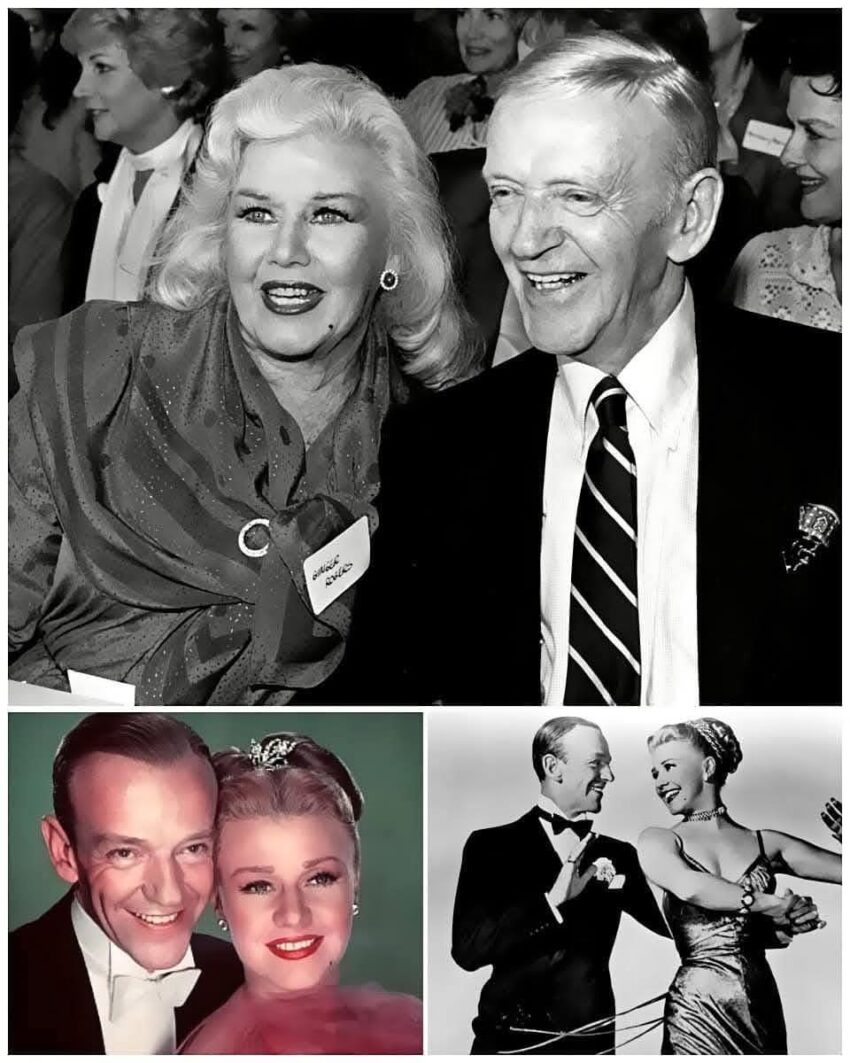During the filming of “Swing Time” (1936), Fred Astaire and Ginger Rogers had a notable disagreement over the choreography for the celebrated dance sequence “Never Gonna Dance.” The routine, which would later be hailed as one of their most breathtaking performances, took an exhausting 47 takes to perfect, testing both their patience and their collaborative spirit. Astaire, known for his perfectionism, insisted on precise execution, while Rogers, equally talented and determined, pushed back on some of his demands, resulting in a creative tension that fueled their artistic magic.Fred Astaire and Ginger Rogers were not initially intended to become the legendary duo they are remembered as today. Their first pairing in “Flying Down to Rio” (1933) was a secondary storyline, but their dance number “The Carioca” stole the show, prompting RKO Pictures to recognize their potential as a leading pair. Over the next decade, they starred in nine more films together, including “Top Hat” (1935), “Shall We Dance” (1937), and “The Gay Divorcee” (1934).Their differing personalities were a key ingredient of their success. Astaire, a perfectionist with a relentless work ethic, was deeply involved in every detail of their routines, down to the placement of each footstep. Rogers, while equally hardworking, had a freer, more instinctive approach to her craft. This dynamic occasionally caused friction, but it also led to some of the most extraordinary dance sequences in cinematic history.The “Swing Time” conflict was emblematic of their working relationship. For “Never Gonna Dance,” a five-minute routine filmed on a sweeping art-deco set, Astaire envisioned a technically flawless performance to match the emotional depth of the scene. Rogers, clad in a gown adorned with ostrich feathers that reportedly weighed over 25 pounds, endured the grueling demands of multiple takes under hot studio lights. Despite the tension, their collaboration produced a masterpiece, with every spin, glide, and lift reflecting a blend of precision and passion.Astaire and Rogers brought a distinctive chemistry to the screen, one that combined romance, elegance, and storytelling through dance. Their routines were not just technical displays of skill but also integral to the narrative of their films. In “Top Hat,” the playful and flirtatious “Cheek to Cheek” sequence captured the growing affection between their characters, while in “Shall We Dance,” the “Let’s Call the Whole Thing Off” number, performed on roller skates, added a touch of humor and charm.Their dances were choreographed with the understanding that they were not simply performers but characters with emotional arcs. This approach set them apart from other dance partnerships of the era. Astaire often said that Ginger “gave him class,” while Rogers famously quipped that she did everything Fred did but “backwards and in high heels.” Their mutual respect, despite their differences, allowed them to create performances that transcended time.While their on-screen chemistry appeared effortless, the reality of their partnership was far more complex. Both were stars in their own right, and their collaboration sometimes led to power struggles. Rogers, determined to assert her independence, often clashed with studio executives and choreographers, while Astaire’s meticulous nature occasionally frustrated his co-stars. Yet, these tensions never undermined the magic they brought to their films. Instead, they seemed to elevate their work, resulting in a level of artistry that audiences continue to admire.Despite their professional differences, Astaire and Rogers maintained a respectful and amicable relationship off-screen. Their partnership ended after “The Barkleys of Broadway” (1949), their only Technicolor film together, as both moved on to pursue separate projects. However, they remained friends and spoke fondly of their time working together in interviews later in life.Fred Astaire passed away on June 22, 1987, at the age of 88 in Los Angeles, California, due to pneumonia. He left behind a legacy of over 30 films and countless groundbreaking dance routines. Ginger Rogers, who lived a vibrant life beyond her partnership with Astaire, passed away on April 25, 1995, at the age of 83 in Rancho Mirage, California, from a heart attack.Their work together continues to be celebrated as the pinnacle of Hollywood’s Golden Age musicals. The creative tension they experienced during projects like “Swing Time” only added to the brilliance of their partnership, proving that even disagreements can lead to artistic triumphs. Their dances remain timeless symbols of elegance and innovation, inspiring generations of performers and audiences alike.
